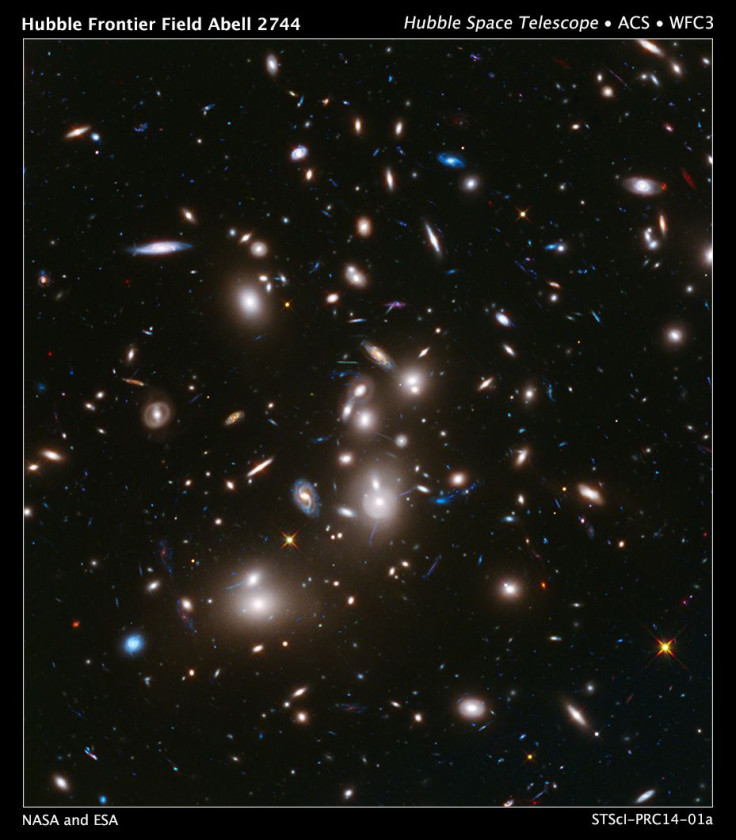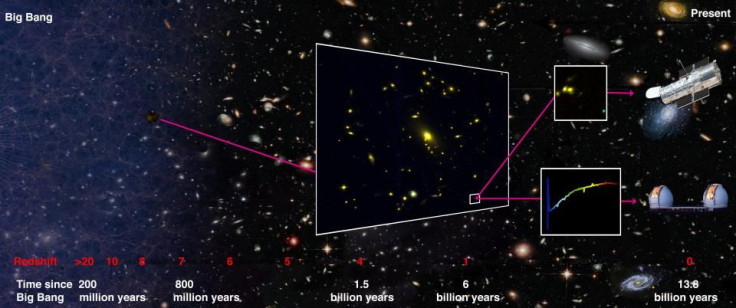One Of The Most Distant Galaxies In The Universe Discovered, And It Is Perfectly Ordinary

Finding some of the oldest objects in the universe can be a challenge, considering the ever-expanding nature of the universe would have increased the distance between many of them, in relation to Earth, by billions of light-years. Add to that the fact that many of the earliest objects were also extremely faint, and that makes the discovery of one of the most distant galaxies in the universe a very interesting matter.
Led by Austin Hoag, a graduate student at the University of California, Davis (UC Davis), a team of astronomers found a new object which dates back to less than a billion years after the Big Bang. The faint galaxy has been named MACS1423-z7p64, and is at a redshift of 7.6, meaning it formed about 13.1 billion years ago. (The expansion of the universe causes light from objects to shift into the red end of the spectrum, the further the object is.)
The faint and distant galaxy was found using a technique called gravitational lensing, which relies on a massive object between the observer and the point being observed. The gravity of the massive object, such as a galaxy cluster, bends the light coming from behind it, and if the object is big enough, it can act like a magnifying lens. In the case of z7p64, a giant galaxy cluster magnified its brightness ten times, making it visible to the researchers.
In a statement Monday, Hoag said: “Other most distant objects are extremely bright and probably rare compared to other galaxies. We think this is much more representative of galaxies of the time.”

Following the explosion of the Big Bang, that set the universe onto its ever-expanding course, there was a period of about one billion years during which it was an opaque place, with nothing quite visible. During that time, cold hydrogen atoms filled up the universe, and given their nature, blocked light. Out of that cloud condensed the first stars and galaxies, and when they began emitting ionizing radiation and light, the atomic hydrogen cleared away and light spread through the universe. That time is called the “Epoch of Reionization.”
The observations made by Hoag and team were published Monday in a paper, titled Spectroscopic confirmation of an ultra-faint galaxy at the epoch of reionization,” in the journal Nature Astronomy.
For their observations, the team used the Hubble Space Telescope and the Keck Observatory telescopes in Hawaii. It plans to also use the James Webb Space Telescope once it launches in 2018, which will give it a chance to look at even more distant objects.
UC Davis professor Marusa Bradac, who was a co-author on the paper, said in the statement, referring to the Webb Telescope: “We will truly witness the birth of the first galaxies which will allow us to answer the longstanding question, of where did we come from.”
© Copyright IBTimes 2025. All rights reserved.





















